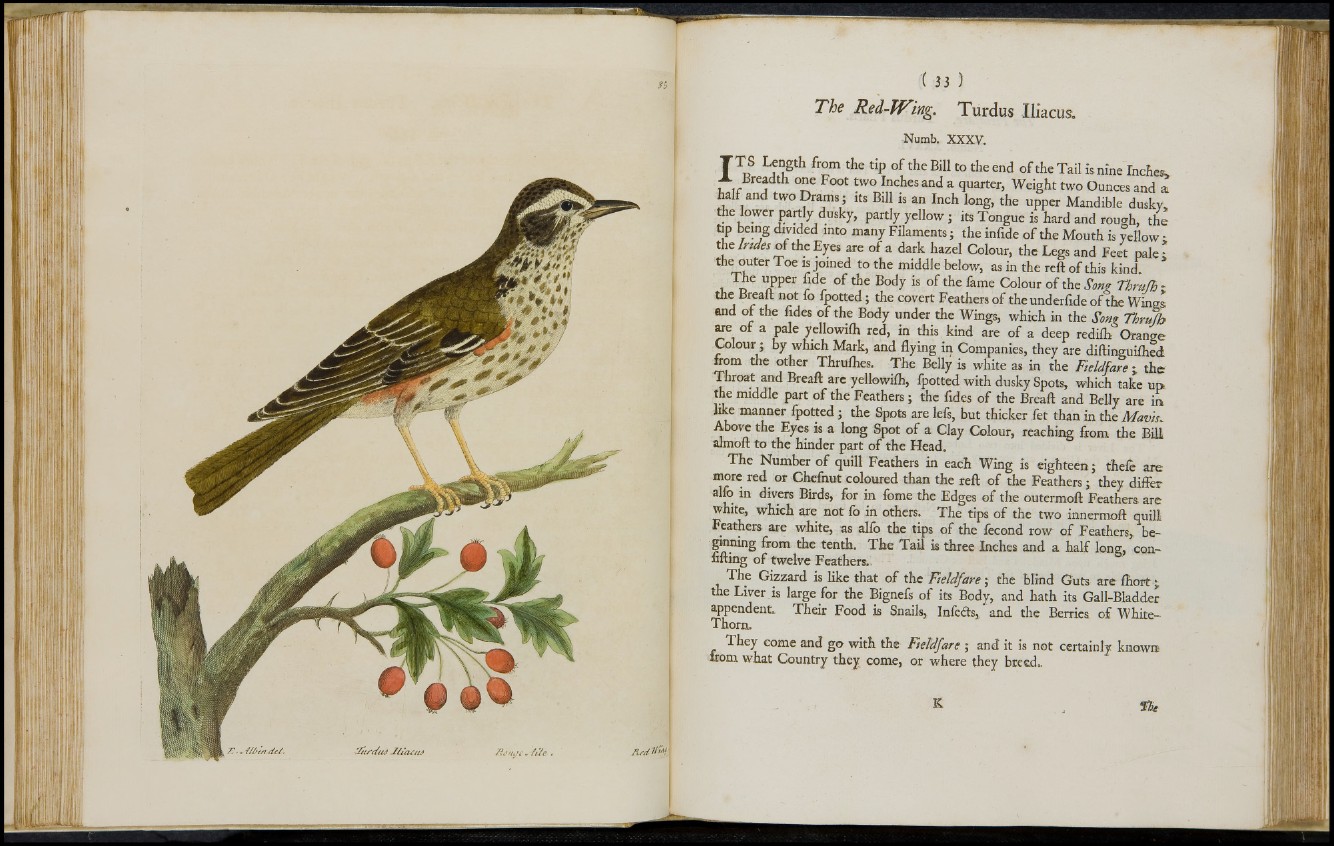
31 | 33 )
The Red-Wing. Turdus Iliacus.
Numb. XXXV. T Tt>S ^ Lgtl1 fr°m tiie of tlie to the end °f the Tail is nine Inches*
Breadth one Foot two Inches and a quarter, Weight two Ounces and a
half and two Drams ; its Bill is an Inch long, the upper Mandible dusky,
the lower partly dusky, partly yellow; its Tongue is hard and rough, the
tip being divided into many Filaments; the infide of the Mouth is yellow •
the Irtdes of the Eyes are of a dark hazel Colour, the Legs and Feet pale *
the outer Toe is joined to the middle below, as in the reft of this kind! *
I n e *Pper r r of tilC Body is of tlle fame Colour of the Son? Thrufh r
the Breaft not fo fpotted; the covert Feathers of theunderfide of the Wings
and of the fides of the Body under the Wings, which in the Son? Tbrufh
are of a pale yellowiih red, in this kind are of a deep redifb Orange
Colour ; by which Mark, and flying in Companies, they are diftinguiihed
from the other Thrufhes. The Belly is white as in the Fieldfare ; the
Throat and Breaft are yellowiih, ipotted with dusky Spots, which take ups
the middle part of the Feathers; the fides of the Breaft and Belly are in
like manner ipotted; the Spots are lefs, but thicker fet than in the Mavis.
Above the Eyes is a long Spot of a Clay Colour, reaching from the Bill
ahnoft to the hinder part of the Head.
The Number of quill Feathers in each Wing is eighteen; thefe are
more red or Chdhut coloured than the reft of the Feathers; they differ
alfo in divers Birds, for in fbme the Edges of the outermoft Feathers are
white, which are not fo in others. The tips of the two innermoft quill
Feathers are white, as allb the tips of the lecond row of Feathers, beginning
from the tenth. The Tail is three Inches and a half long, confining
of twelve Feathers..
The Gizzard is like that of the Fieldfare ; the blind Guts are ihort;
the Liver is large for the Bignefs of its Body, and hath its Gall-Bladder
appendent. Their Food is Snails, Infedts, and the Berries of White-
Thorn.
They come and go with the Fieldfare ; and it is not certainly known
from, what Country they come, or where they breed*
& S fe